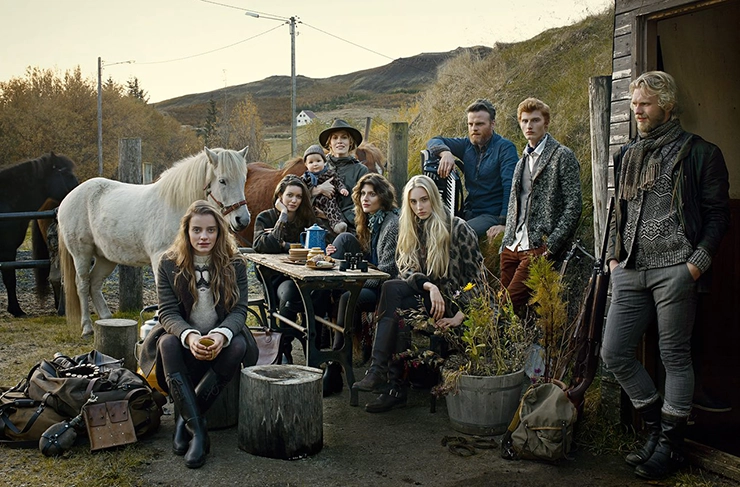
Iceland, a land of dramatic landscapes and vibrant cultural traditions, offers a unique sartorial experience that blends practicality with a rich heritage. The island’s unpredictable weather and its deep-rooted customs are both reflected in Icelandic clothing, which ranges from everyday wear to elaborate national costumes. This guide explores the essential aspects of Icelandic clothing, from traditional garb to modern attire suited for the island’s climate.
Þjóðbúningur (National Costume of Iceland)
Icelandic national costumes, known as “Þjóðbúningur,” are celebrated for their intricate designs and historical significance. There are several variations, each with its own distinct features and regional influences:
Faldabúningur
This is one of the oldest and most elaborate Icelandic costumes, dating back to the 17th century. It is characterized by its distinctive headgear, known as “faldr,” which can be quite ornate. The costume typically includes a long, woolen skirt, a heavily embroidered bodice, and a white apron. The faldabúningur is often worn during national festivals and special occasions.
Skautbúningur
Introduced in the 19th century, this costume is slightly simpler than the faldabúningur but equally elegant. It features a long skirt, a fitted bodice, and a white lace apron, with a distinctive black silk hat known as “skaut.” The skautbúningur reflects the influences of European fashion trends of the time, blending them with Icelandic traditions.
Upphlutur
This everyday costume is less formal but still deeply rooted in Icelandic culture. The upphlutur includes a white blouse, a colorful vest, and a long skirt. It is often adorned with silver buttons and jewelry.
Peysuföt (Peasant Woman’s Costume)
This costume, worn by Icelandic women in the 19th century, is practical and simple. It consists of a long, dark-colored skirt and a fitted, woolen jacket known as “peysa.” The peasant woman’s costume is indicative of the everyday wear of Icelandic women in historical rural settings.
Þjóðbúningur karla (Men’s National Costume)
Icelandic men’s national costume, known as “Þjóðbúningur karla,” typically includes a woolen jacket called a “treyja” and woolen breeches known as “brók.” These are often accompanied by a white linen shirt and a colorful waistcoat, called “vettlingar,” with decorative embroidery. The outfit is completed with a black felt hat and sometimes includes knitted woolen socks and leather shoes.
Kids’ Costumes
Icelandic children’s national clothing mirrors the traditional attire of adults but in smaller sizes, featuring similar elements such as woolen jackets or dresses, embroidered waistcoats, and knitted socks. Girls typically wear a “faldbúningur” dress with a white apron and a headdress, while boys wear a “Þjóðbúningur” with breeches, a shirt, and sometimes a vest. Both outfits are often adorned with intricate embroidery and traditional patterns, reflecting Iceland’s rich cultural heritage.
Modern Icelandic Clothing
While traditional costumes hold a place of honor in Icelandic culture, contemporary Icelandic clothing is all about practicality and comfort, reflecting the country’s harsh weather conditions. Modern Icelandic fashion is characterized by the use of natural materials like wool and leather, often sourced locally.
Lopapeysa
The iconic Icelandic wool sweater, known as “lopapeysa,” is a staple in both local and international wardrobes. Recognizable by its circular yoke pattern, the lopapeysa is warm, durable, and perfect for Iceland’s cold climate. These sweaters are handmade from Icelandic sheep wool, which is renowned for its insulating properties.
Outdoor Gear
Given Iceland’s unpredictable weather, layered clothing is essential. Waterproof jackets, thermal base layers, and sturdy hiking boots are common in everyday Icelandic attire.
The post Complete Guide to Icelandic Clothing appeared first on The Fashiongton Post.
